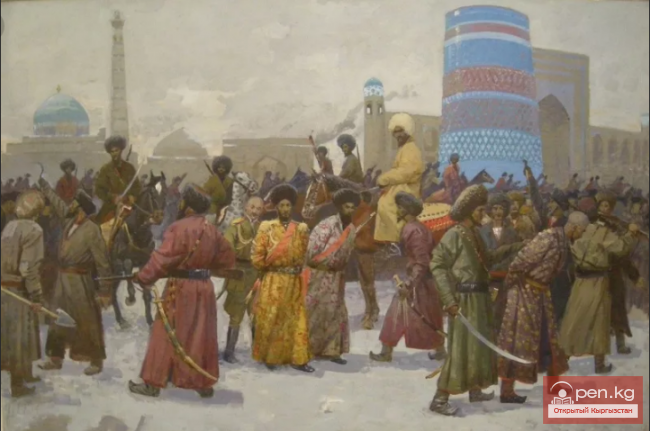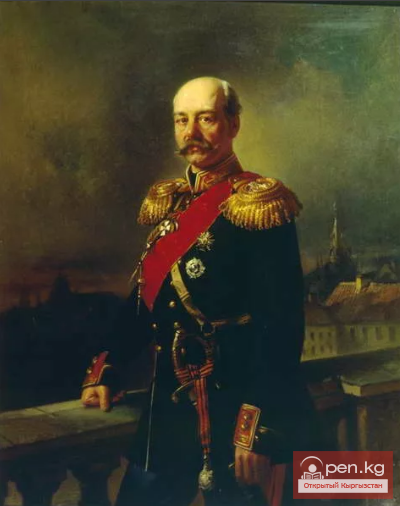
The Heterogeneous Social Composition of the Uprising of the Peoples of Central Asia in May 1898
In summarizing works such as "Essays on the History of the Communist Party of Turkestan," "History of the Kirghiz SSR," "History of the Tajik SSR," and "History of the Uzbek SSR," the uprising of the peoples of Central Asia in May 1898 is characterized as a national liberation uprising. The overwhelming majority of historians consider this uprising to be a national liberation and anti-feudal rebellion. According to some researchers, this uprising has a feudal-monarchic and anti-Russian character. The uprising in question was provoked by the national oppression of colonial authority and was directed against the tsarist autocracy.
This uprising had support from the indigenous population, particularly in the Fergana Valley, and to a significant extent in the Semirechye and Syr-Darya regions. The scale and support for the studied uprising among the population of the aforementioned regions, especially Fergana, is acknowledged even by high-ranking tsarist officials such as Generals Dukhovsky and Dolinsky, as well as the orientalist N. Ostrooumov. The mentioned researcher noted that "the event known as the 'Andijan Uprising' would be more accurately called the 'Fergana Uprising,' because it encompassed the entire Fergana region of Russian Turkestan, not just Andijan." The commander of the troops of the Turkestan Military District, Lieutenant General Dukhovsky, who led the actions of the tsarist punitive detachment to suppress this uprising, noted in his report of August 5, 1898, that "although the outbreak occurred in Fergana, this phenomenon cannot be considered purely local or the affair of any one class of the population. Sympathy...(for the uprising—K.U.), as can be seen from the course of the judicial investigation, was shown by almost the entire population of Fergana, but there are also grounds to assume that the uprising was known in other places of the region." The sympathy and support for the uprising from the residents of the Semirechye region, including the northern part of Kyrgyzstan, is evidenced by a secret report from the head of the Przhevalsky district dated June 15, 1898, and some other official archival documents.
The driving force of the studied uprising consisted of Kyrgyz, Uzbek, and Tajik laborers, driven to the level of poverty. This is reflected in official archival documents. In one of them, in particular; in the report (dated August 1, 1898) of the military prosecutor of the Turkestan military district court, Major General Dolinsky, who interrogated hundreds of participants in the uprising and determined their punishment, it is stated: "Finally, as always in popular unrest, all sorts of riffraff joined the uprising: day laborers (mardekery), petty traders, peddlers, beggars (duvana—dervishes—K.U.) ... generally, vagrants, having no fixed occupations or places of residence, who have nothing to lose." Similar information is found in other official archival documents produced by tsarist officials, who, under the pressure of facts, were forced to acknowledge the widespread participation of the working class in the mentioned uprising. In some folklore materials, particularly in the poem "Satire on Ishan-Dukchi," it is also emphasized that the main participants in the uprising of interest to us were commoners and the impoverished, i.e., the poor. The mentioned poem highlights the joint actions of Uzbek, Kyrgyz, Tajik, and Kipchak workers.
As emphasized in an official archival document, young men—dzhigits—also showed activity in this uprising.
In terms of its social composition, the uprising was not homogeneous. Although its backbone consisted of working people, representatives of the feudal nobility also actively participated in it. Moreover, such feudal lords as Madali Ishan (Muhammed-Ali-Khalifa-Mulla-Sabir-Sufi), Mulla Ahmed Naib, Haid bai Toksaba, Mulla Kasym Amin Arab-Bai oglu, Arzy-Kul bai pansat, Muhammad Ibrahim toksoba pansat, Mulla Gaib Nazar Artyk Sufi oglu, Ali-Bek datkha Japara oglu, Gaib-Khodji, Muhammad-Murat oglu, Muhammad Ziyatdin Mahsum-Damulla-Sharif oglu, Umarbek (Omorbek) datkha, Atakul Pansat kalpa, Rustambek, Mallyabai, and Khudoyat-khan (Inoyat-khan) played an important role in the uprising, particularly during the attack of the rebels on the tsarist military garrisons in the city of Andijan, led by the well-known Muslim spiritual leader Madali Ishan, or, as he was often called, Dukchi (the spinner) Ishan.
"The Andijan Uprising" - one of the complex events in the history of the peoples of Central Asia












































